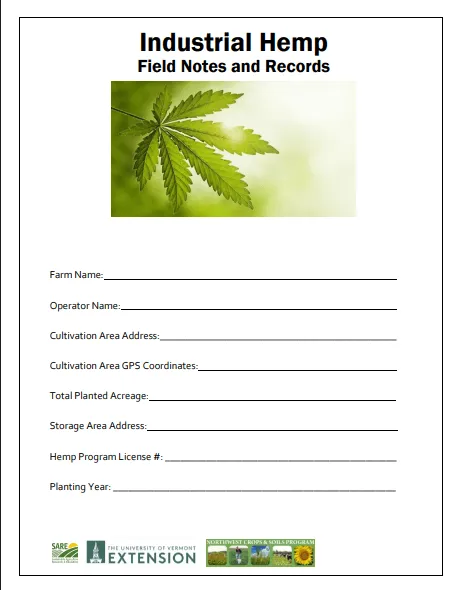The North American hemp market is currently estimated at over $400 million in retail sales and growing at about 10% per year. Clearly, there is demand for hemp and we would like to help farmers and processors in Vermont and throughout the Northeast evaluate this opportunity and promote sustainable practices for this agricultural crop.Industrial Hemp in Vermont - Growing Hemp for Fiber (PDF)
This new publication shares grower and research experiences in the Northeast that have begun to shed light on best management practices for the planting, harvesting, and processing of industrial hemp.
Planning to grow hemp this season? Please click the link below to review the most up to date information and requirements. Vermont Agency of Agriculture, Food & Markets Hemp Program The USDA Risk Management Agency (RMA) administers federal crop insurance programs. This fact sheet provides current federal risk management programs available for producers growing hemp in 2022 - Risk Coverage for Industrial Hemp.
Industrial Hemp Project Crowdfunding Opportunity
We began our industrial hemp research program in 2016 with the help of program donations – thank you! Interest in the crop and research-based guidance has continued to grow, and we need your help to keep this research project going. To date we have implemented research trials to study best planting dates, varieties, and field management for hemp fiber, seed, and CBD production.
In order to expand our hemp research, outreach, and education capacity, we need your help with our continued request for support!
Please help support our Hemp Research and visit our crowdfunding page today.
Factsheets
- Winter Retting Fact Sheet 2025 (PDF)
- Field Retting Photo Guide 2025 (PDF)
- Industrial Hemp for Flower Production: A Guide to Basic Production Techniques (PDF)
- Building a Walk-In Caterpillar Tunnel (PDF)
- The European Corn Borer in Hops and Hemp Fact Sheet (PDF)
- Hemp Bulletin - Managing Common Pest in Hemp (PDF)
- Fire Safety Pointers for Farmers Processing Hemp (PDF)
- Frequently Asked Questions for VT Hemp Growers about Commerce and Out-of-State Sales (PDF)
- Sampling and Testing of Hemp in Vermont Frequently Asked Questions (PDF)
- Top 10 Tips for Effective Marketing (PDF)
Related Articles of Interest
- NOFA Publishes Organic Certification for Hemp Seed and Fiber (April 18, 2018)
- Universities meet growing demand with Weed 101 (April 20, 2018)
- Regulations and the Manufacturing of Hemp Products (PDF) (September 2021)
- Vermont Hemp Production Plan approved by USDA (PDF) (January 2022)
- Spotlight on Janet Currie, Valley Stock Farms, Growing Hemp and Growing a Business (PDF) (October 2022)

Industrial Hemp Record Keeping Booklet
We have also created an Industrial Hemp Booklet for field notes and records that contains several Excel spreadsheets for tracking information. We are making printed copies as well.
Industrial Hemp Record Keeping BookletResearch Reports
Visit our research reports page to see results of our hemp research trials to:
- Evaluate varieties best suited to our region;
- Determine ideal seeding rates and optimal planting dates; and
- Assess weed, pest, and disease pressure.